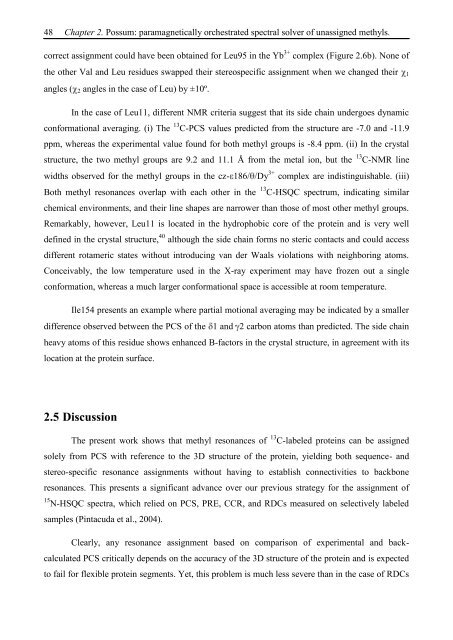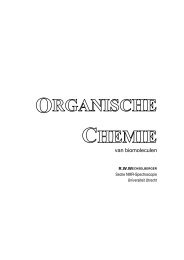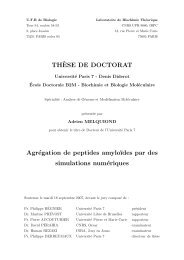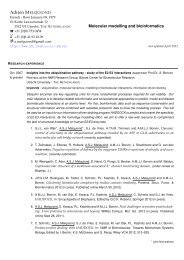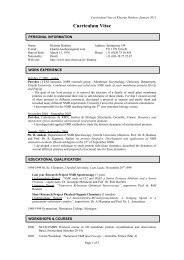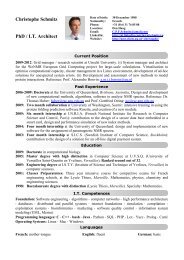Thesis Title: Subtitle - NMR Spectroscopy Research Group
Thesis Title: Subtitle - NMR Spectroscopy Research Group
Thesis Title: Subtitle - NMR Spectroscopy Research Group
You also want an ePaper? Increase the reach of your titles
YUMPU automatically turns print PDFs into web optimized ePapers that Google loves.
48 Chapter 2. Possum: paramagnetically orchestrated spectral solver of unassigned methyls.<br />
correct assignment could have been obtained for Leu95 in the Yb 3+ complex (Figure 2.6b). None of<br />
the other Val and Leu residues swapped their stereospecific assignment when we changed their 1<br />
angles ( 2 angles in the case of Leu) by ±10º.<br />
In the case of Leu11, different <strong>NMR</strong> criteria suggest that its side chain undergoes dynamic<br />
conformational averaging. (i) The 13 C-PCS values predicted from the structure are -7.0 and -11.9<br />
ppm, whereas the experimental value found for both methyl groups is -8.4 ppm. (ii) In the crystal<br />
structure, the two methyl groups are 9.2 and 11.1 Å from the metal ion, but the 13 C-<strong>NMR</strong> line<br />
widths observed for the methyl groups in the cz- 186/ /Dy 3+ complex are indistinguishable. (iii)<br />
Both methyl resonances overlap with each other in the 13 C-HSQC spectrum, indicating similar<br />
chemical environments, and their line shapes are narrower than those of most other methyl groups.<br />
Remarkably, however, Leu11 is located in the hydrophobic core of the protein and is very well<br />
defined in the crystal structure, 40 although the side chain forms no steric contacts and could access<br />
different rotameric states without introducing van der Waals violations with neighboring atoms.<br />
Conceivably, the low temperature used in the X-ray experiment may have frozen out a single<br />
conformation, whereas a much larger conformational space is accessible at room temperature.<br />
Ile154 presents an example where partial motional averaging may be indicated by a smaller<br />
difference observed between the PCS of the 1 and 2 carbon atoms than predicted. The side chain<br />
heavy atoms of this residue shows enhanced B-factors in the crystal structure, in agreement with its<br />
location at the protein surface.<br />
2.5 Discussion<br />
The present work shows that methyl resonances of 13 C-labeled proteins can be assigned<br />
solely from PCS with reference to the 3D structure of the protein, yielding both sequence- and<br />
stereo-specific resonance assignments without having to establish connectivities to backbone<br />
resonances. This presents a significant advance over our previous strategy for the assignment of<br />
15 N-HSQC spectra, which relied on PCS, PRE, CCR, and RDCs measured on selectively labeled<br />
samples (Pintacuda et al., 2004).<br />
Clearly, any resonance assignment based on comparison of experimental and back-<br />
calculated PCS critically depends on the accuracy of the 3D structure of the protein and is expected<br />
to fail for flexible protein segments. Yet, this problem is much less severe than in the case of RDCs


